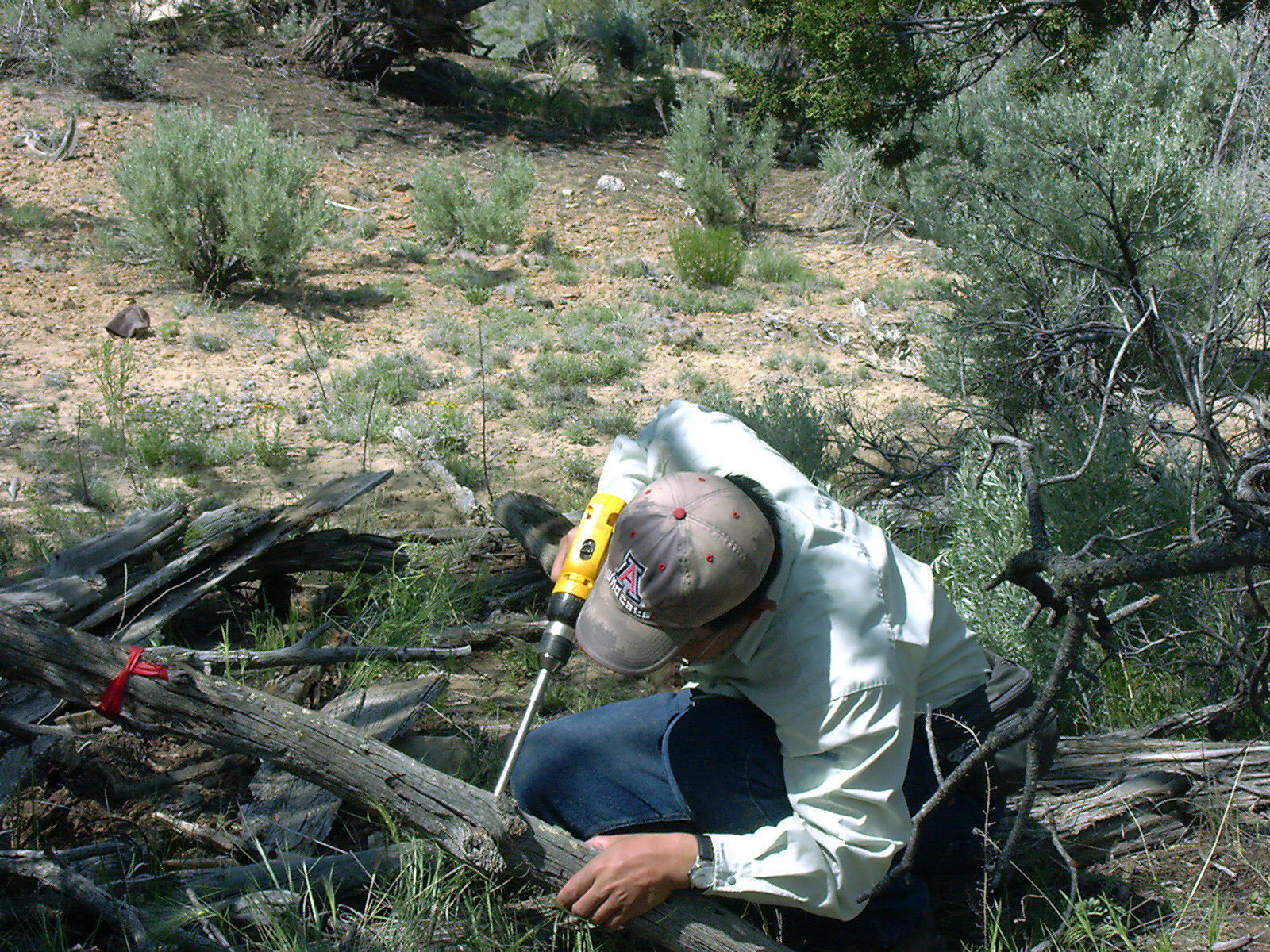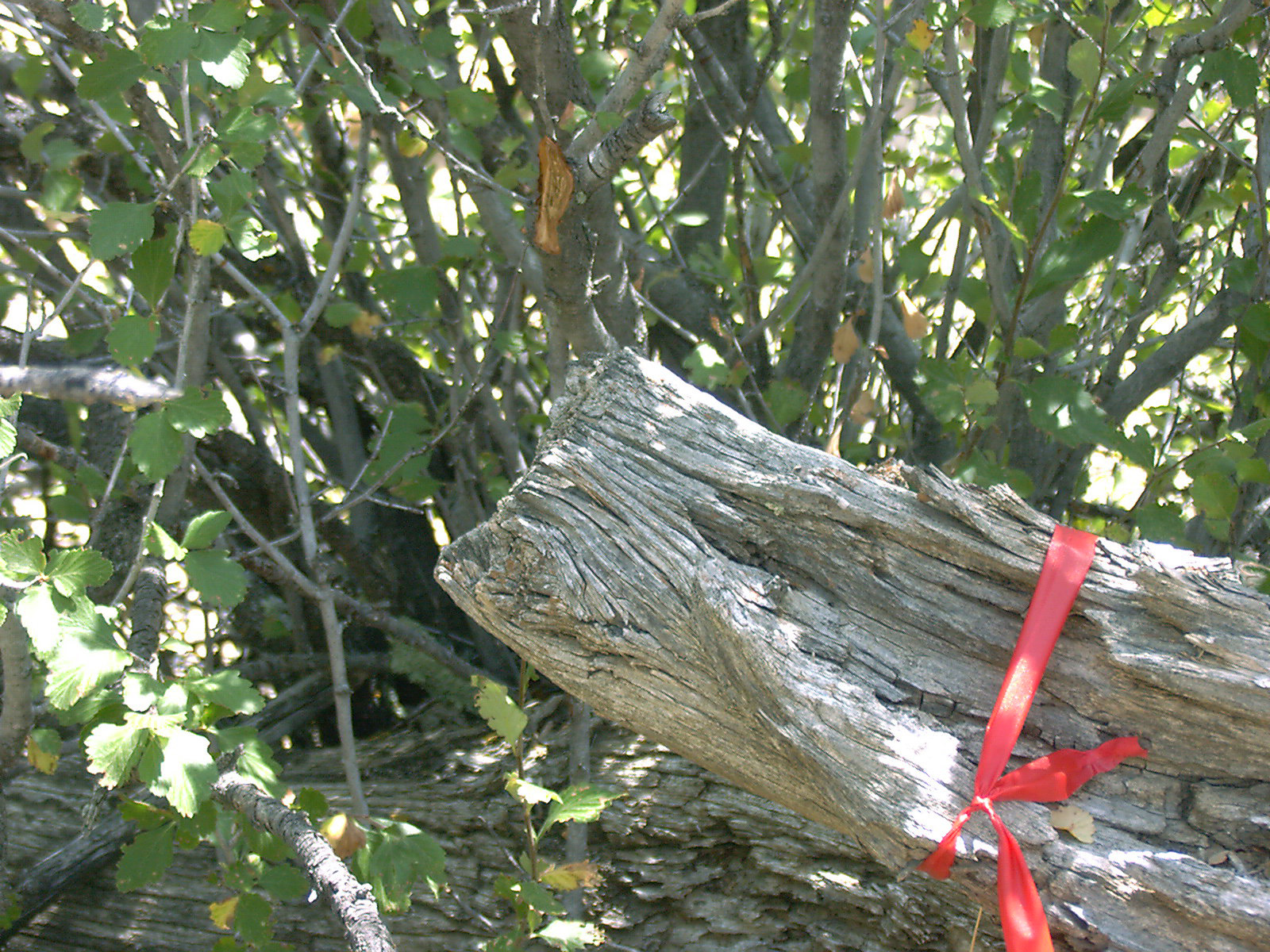Methods
Archaeological Sampling
The variable nature of the archaeological remains on La Ventana Mesa necessitated several different sampling strategies to recover relevant information. Because all of the sites had been recorded previously, our recording efforts concentrated on site and feature photography, GPS locating of sites and features, sketch mapping, and dendroarchaeological sampling and sample documentation.
Navajo sites required the most complex sampling and documentation methods. The hogans and sweatlodges often contained construction timbers that were weathered and clearly lacked attributes of true outside rings. Most of these beams were sampled by coring those areas that exhibited the best outsides (figure 1); cross sectioning of these timbers was generally avoided, unless absolutely necessary, because of the negative visual impact on the sites and because such “modern” evidence might inadvertently encourage unauthorized wood collecting.

Figure 1. Taka Okochi collecting a core sample at the Reynolds Homestead.
A critical aspect of the dendroarchaeology of Early Navajo sites is recognizing and sampling Culturally Modified Trees (CMTs), i.e. tree limbs, stumps, and boles that were exploited by the site occupants (figure 2). These samples were collected by coring and sometimes sawing full or partial sections.

Figure 2. A CMT/ax-cut limb on La Ventana Mesa.
The historic homesteads presented other challenges, particularly the Anglo-American sites. The construction of large square/rectangular structures required more large, straight timbers. Although such trees often are easier to crossdate, shaping and flattening of these beams sometimes removed the outside rings; in addition, some large beams are simply the result of fast-growing trees that exhibit complacent ring series and often have few rings; therefore, they may not crossdate. We collected samples from these sites as cores and sections.
